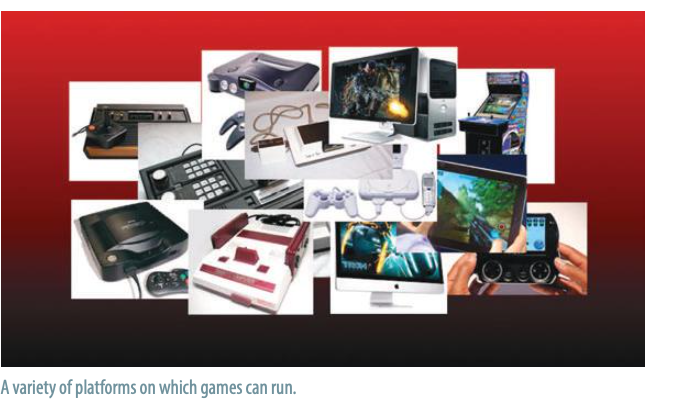AAA (Animation, Art, Audio): Making Sense of Sound for Games
Why game audio is different
- Real-time, non-linear systems: music and SFX respond to game state and player input
- Technical budgets: CPU, memory, streaming IO, voice counts, spatialization headroom
- Platform variability: APIs, device outputs, loudness targets, and certification rules
What’s a platform?

Arcade
More links: International Arcade Museum · MAME
Console
- Generational hardware with strong middleware support (FMOD, Wwise)
- Living-room context drives output choices and target loudness; certification influences mix and output modes
- Devkits matter for validating device routing, controller headset paths, and compliance checks
See: Retro Consoles Wiki · webЯcade More links: FMOD Studio docs · Wwise platforms overview · XAudio2 (Microsoft) · Dolby Atmos for Xbox
PC in 2025: Windows, macOS, Linux

- Windows remains the broadest target; plan device-routing tests (WASAPI/XAudio/ASIO)
- macOS (Apple silicon): ports increasingly arrive via modern tooling; verify device routing and plugin behavior
- Linux/SteamOS: many Windows titles run via Proton; validate controller/headset paths and any middleware conditionals
Further reading: Steam Hardware & Software Survey · Proton · Apple Game Porting Toolkit More links: WASAPI/Core Audio APIs · ASIO (Steinberg) · Core Audio (Apple) · PipeWire · JACK Audio
Handheld
- From Game Boy to modern handheld PCs
- Same middleware as PC, different constraints: battery/thermal budgets, smaller speakers
- Budget CPU for HRTF/spatialization; plan a “handheld mix” profile
Also try: webЯcade More links: Steam Deck · SteamOS · Game Boy sound (Pan Docs)
Mobile
- iOS and Android dominate; audio stacks include AVAudioEngine/Core Audio and AAudio/Oboe
- Fragmentation: test on speakers and common earbuds; consider Bluetooth latency
- Use mobile-specific EQ/DRC and format choices to protect intelligibility on phone speakers
More links: AVAudioEngine · Android Oboe · AAudio
Web-based games
- Early multiplatform gaming with engines offering consistent visual interfaces
- Flash is discontinued; modern web games use HTML5, WebAudio, WebAssembly, and increasingly WebGPU
- Engine exports (Unity WebGL, Godot HTML5) have audio feature gaps vs. native builds
- Native-web stacks: Phaser or PlayCanvas for rendering, with howler.js or Tone.js for direct control of WebAudio
- Example archive: Flash Museum – Flash Games Online for Free
See also: Web Audio API (MDN) · AudioWorklet · WebAssembly · WebGPU · Unity WebGL audio · Godot export for web · Tone.js · howler.js · Phaser audio · PlayCanvas audio
Cloud/streaming as a platform
- Audio is encoded/decoded in the stream; plan headroom and transient handling
- Latency is network-bound; design UI and audio feedback tolerant of added delay
- Test loudness and intelligibility across common streaming clients
More links: Opus codec · WebRTC · Cloud gaming (overview)
XR/VR snapshot
- Object and ambisonic workflows; HRTF spatialization is the default
- Geometry-driven acoustics (occlusion, reflections, reverb) via SDKs
- CPU budgeting: plan voice counts; decide baking vs. real-time
More links: Steam Audio · Meta XR Audio SDK · Microsoft Spatial Sound · Resonance Audio
Narrativism and ludology
- Video games as stories: cyberdrama, interactive fiction, multi-path outcomes
- Video games as systems: rules, constraints, challenge navigation
- Modern practice balances authored narrative with system-driven moment-to-moment play
Further reading: Ludology · Narrative in video games · Hamlet on the Holodeck
MDA framework (mechanics → dynamics → aesthetics)
- Mechanics: data and rules
- Dynamics: runtime behavior from player and system interaction
- Aesthetics: the emotional responses evoked in the player
More links: MDA paper (PDF)
Emergence in games
More links: Emergent gameplay · The Sound of No Man’s Sky (GDC)
References and resources
- Design foundations
- Platform shifts and implications
Web audio stack
Spatial and emergent audio